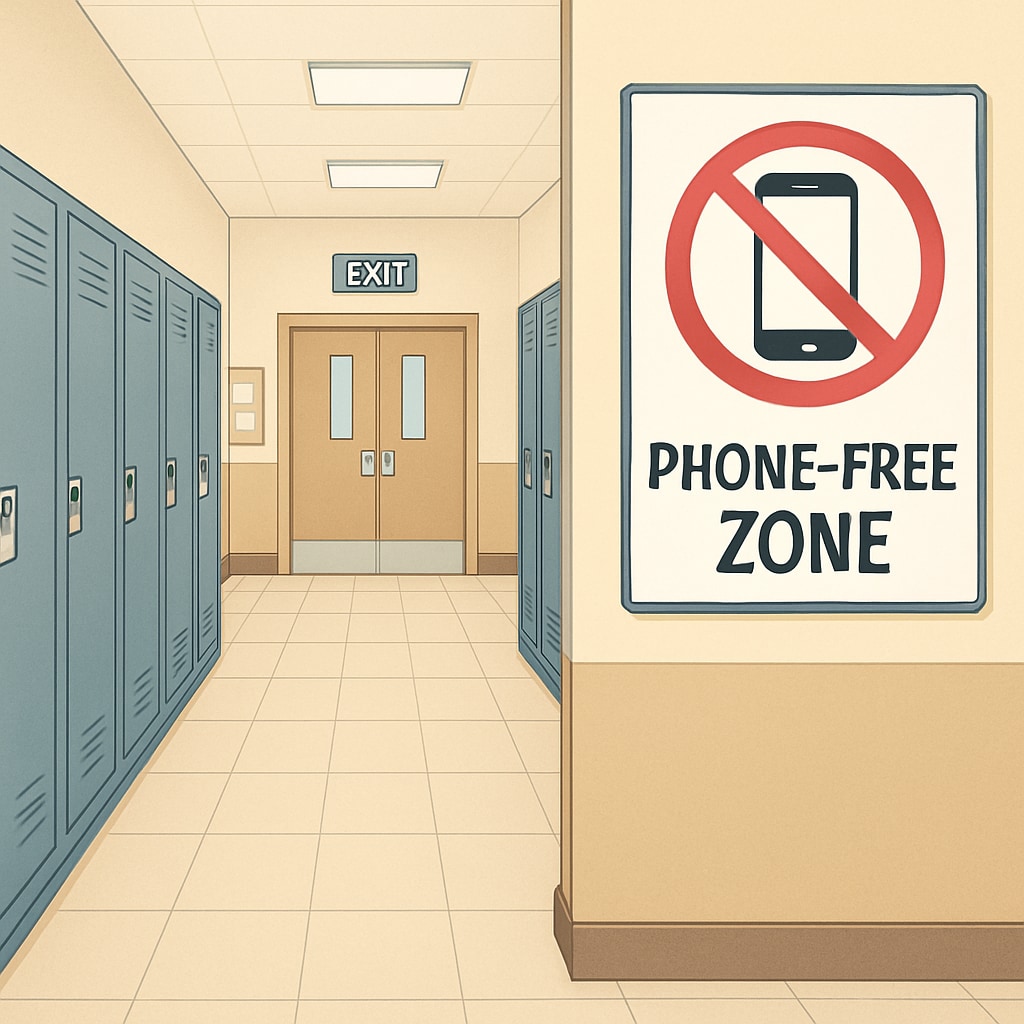As more states adopt comprehensive K12 school phone bans, educators and parents are debating the balance between fostering a distraction-free learning environment and addressing students’ safety and digital literacy needs. The policy aims to mitigate learning disruptions and improve classroom focus, but it raises questions about resource allocation and the broader implications of restricting access to technology. This article explores the advantages and drawbacks of school-wide phone bans and proposes alternatives to achieve a balanced approach to phone management in educational settings.
Advantages of School-Wide Phone Bans
School phone bans bring several benefits, primarily focused on reducing distractions and improving student engagement during class hours. By removing access to phones, schools aim to create a more focused environment that encourages active participation and minimizes interruptions caused by social media notifications or gaming apps.
- Improved Academic Performance: Studies have shown that minimizing distractions can lead to better concentration and higher academic achievement.
- Enhanced Social Interaction: Without phones, students are more likely to engage face-to-face, fostering stronger interpersonal connections.
- Reduced Cyberbullying: Limiting phone usage at school can decrease incidents of online harassment during school hours.

Challenges and Limitations of Phone Bans
While phone bans may create a quieter classroom, they also present challenges that require careful consideration. For instance, phones are often relied upon for emergency communication, and outright bans can lead to logistical issues when addressing safety concerns or accommodating students with specific needs.
- Safety Concerns: Parents may worry about their ability to contact children during emergencies if phones are inaccessible.
- Resource Inequality: Not all schools have the funding to provide alternative digital tools, like tablets or laptops, which could replace certain functionalities of smartphones.
- Missed Opportunities for Digital Literacy: Phones can serve as valuable tools for teaching responsible tech use, an essential skill in today’s digital world.

Alternative Solutions to Comprehensive Phone Bans
Instead of outright bans, many experts advocate for balanced policies that integrate technology responsibly into school routines. These alternatives aim to address the concerns of learning disruptions while still leveraging the educational benefits of digital tools.
- Designated Phone Zones: Schools can create phone-friendly areas during breaks, ensuring students can access their devices without disrupting classrooms.
- Digital Literacy Programs: Incorporating lessons on responsible phone usage can help students develop self-regulation skills and avoid misuse.
- Emergency Access Policies: Allowing limited phone use for emergencies ensures safety concerns are addressed.
- Technology Alternatives: Providing school-issued devices for educational purposes can reduce dependency on personal phones while maintaining access to digital resources.
For example, schools in France have implemented policies that permit phone usage outside of learning hours, balancing the need for focus with the reality of modern communication needs (School phone policy on Wikipedia). Similarly, some U.S. institutions are piloting programs that combine restricted phone use with educational technology to enhance learning (Educational technology on Britannica).
Conclusion: Striking the Right Balance
While phone bans in schools aim to curb distractions and protect students, the policy is not without challenges. A balanced approach—combining restricted phone usage, digital literacy education, and access to alternative technologies—can address safety concerns, minimize disruptions, and foster responsible tech habits. Such policies empower students to navigate the digital world effectively, preparing them for both academic and personal success.
Ultimately, schools must tailor their approach based on their unique needs and resources, ensuring that policies are equitable and effective for all stakeholders. By embracing thoughtful alternatives, educators can create an environment where learning thrives without sacrificing safety or digital competency.


